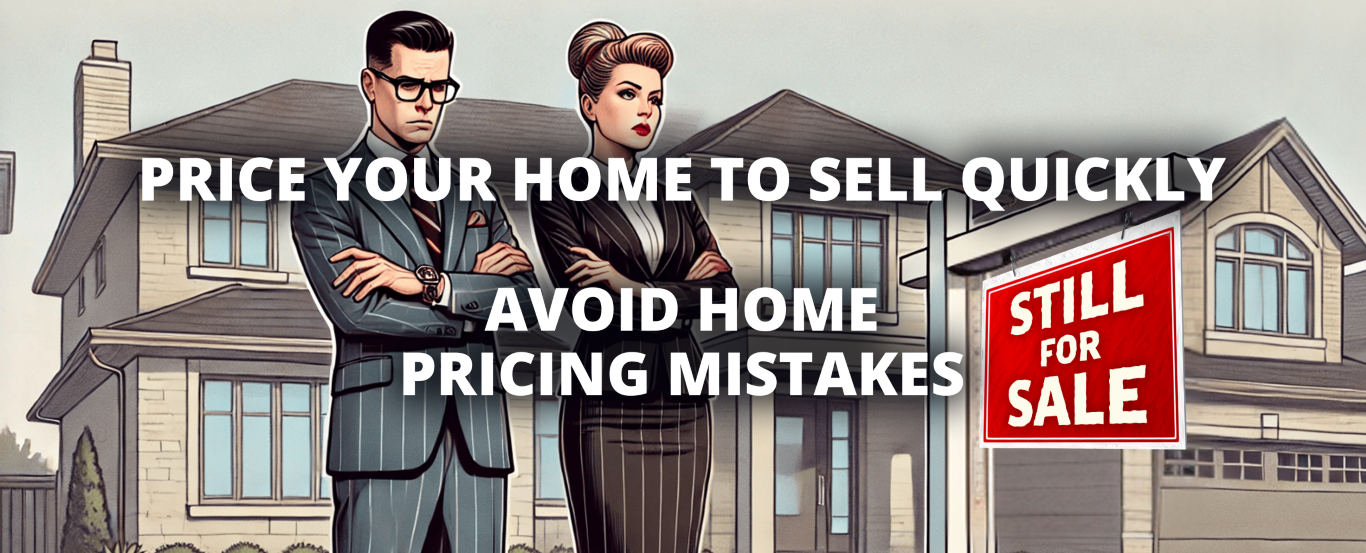
Start your search
Pricing Your Home to Sell: Avoid These Common Mistakes
Pricing your home correctly is one of the most critical factors in achieving a successful sale. However, many home sellers fall into common traps that can hinder their ability to sell quickly and for the best price. Here’s how to avoid the most frequent pricing pitfalls:
Common Pricing Mistakes to Avoid
1. Overpricing Your Home
Overpricing is one of the most common mistakes sellers make. While it might seem logical to set a high price to leave room for negotiation, this strategy often backfires. Overpriced homes attract fewer showings, stay on the market longer, and frequently require price reductions—sometimes leading to a final sale price lower than if the home had been priced correctly from the start.
2. Neglecting Market Comparisons
Some sellers skip conducting a Comparative Market Analysis (CMA) or ignore the sale prices of similar homes in their area. Without this critical data, it's easy to set an unrealistic asking price. A knowledgeable real estate agent can help you analyze recent sales and establish a competitive price that aligns with current market conditions.
3. Letting Emotions Dictate Pricing
Emotional attachment to your home can cloud your judgment when setting a price. Sellers often overvalue their property because of sentimental memories or personal investments in upgrades. While these factors may hold emotional value, buyers focus on market value. It’s important to rely on objective data and expert advice rather than emotions.
4. Misjudging Buyer Sentiment
Failing to understand the current market dynamics is another costly mistake. In a buyer's market with high inventory, pricing too aggressively can deter interest. Conversely, in a seller's market with limited inventory, slightly underpricing your home can spark bidding wars, often resulting in a higher final sale price.
5. Overlooking Timing Factors
Timing plays a crucial role in selling your home, but many sellers underestimate its impact. While spring and summer are traditionally considered peak seasons, selling in the winter can also offer unique advantages. Understanding these seasonal trends can help you time your listing strategically for maximum success.
- Benefits of Selling in Spring and Summer
Spring and summer are often viewed as the best times to sell a home. Warmer weather, longer daylight hours, and the school year cycle encourage more buyers to enter the market. Homes tend to show better during these months, with vibrant landscaping and more natural light enhancing curb appeal. Additionally, the increased buyer activity often leads to faster sales and competitive offers. - Benefits of Selling in Winter
While winter is typically a slower season, it offers distinct advantages for motivated sellers. Fewer homes on the market mean less competition, giving your listing more visibility. Winter buyers are often more serious and motivated, such as those relocating for jobs or trying to close before year-end. Homes can also feel cozy and inviting during the winter months, creating an emotional appeal for buyers.
By understanding the benefits of each season, you can choose the best timing for your needs and goals, whether it’s taking advantage of spring’s buyer surge or capitalizing on winter’s low competition.
Ignoring Feedback and Market Trends
Some sellers remain rigid with their pricing strategy, even when the market or buyer feedback suggests otherwise. If your home isn’t receiving interest or offers after several weeks, it may be time to revisit your pricing. Staying flexible and adapting to market conditions can make the difference between a quick sale and a prolonged listing.
How to Price Your Home Strategically
To avoid these pitfalls, follow these steps to set your home up for success:
- Conduct a Comparative Market Analysis (CMA): Partner with an experienced real estate agent to evaluate recent sales of similar properties in your area.
- Base Your Price on Data: Use market trends and factual information rather than emotions to determine your asking price.
- Understand Current Market Dynamics: Learn whether you’re in a buyer’s or seller’s market and tailor your pricing strategy accordingly.
- Time Your Listing Wisely: Consider seasonal trends and aim to list during peak selling months when demand is high.
- Stay Open to Adjustments: Be willing to adjust your price if your home isn’t generating sufficient interest or offers.
The Bottom Line
Pricing your home strategically is the key to a successful sale. By avoiding common mistakes and leveraging the expertise of a skilled real estate agent, you can attract more buyers, sell your home faster, and achieve a price that maximizes your profit. Make informed decisions, stay flexible, and you’ll position your home to sell in today’s competitive market.
